Preserving water-damaged photos is vital for safeguarding precious memories and historical records. Preserving these artifacts isn’t about nostalgia. It’s about honoring our past and passing on stories to future generations. Swift and careful restoration is important when these images suffer from water damage.
The following article delves into ten essential steps for water-damaged photo restoration. The page walks you through each restoration process, from gentle techniques to meticulous methods. Ensure that your cherished photographs remain intact for years to come. Repair water-damaged photos with ease by following the guide. Read on to learn more.
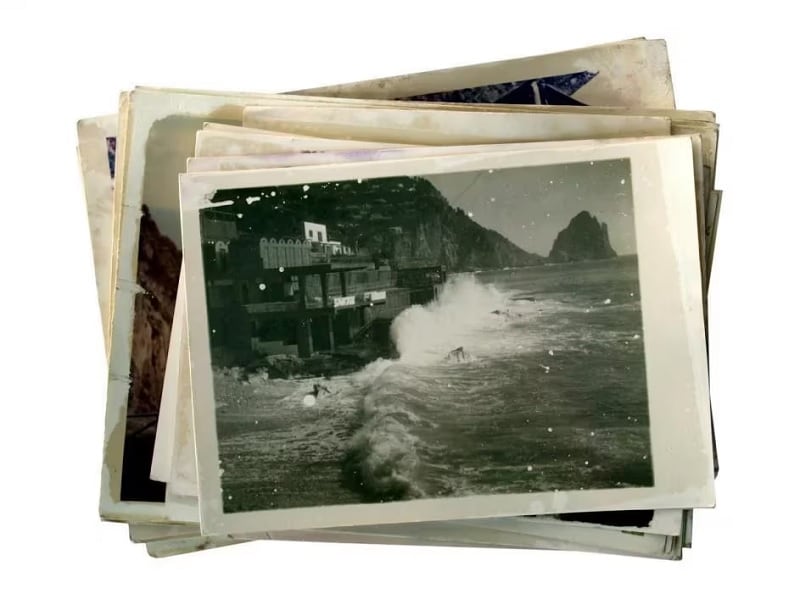
In this article
Par I. Different Types of Water-Damaged Photos
Water damage can cause irreparable harm if not addressed promptly. Learning the various types of water damage is needed for effective restoration. Here are some common causes:
- Your photos are completely submerged in water. It’s often a result of accidents or natural disasters.
- Similar to submersion but occurs on a larger scale, affecting multiple photos at once.
- Leaking caused by water seeping into storage areas or containers can lead to localized damage.
- Condensation. Moisture buildup on the surface of photos can lead to condensation. The instance can happen due to sudden temperature changes.
- Prolonged exposure to high humidity levels can lead to gradual deterioration.

Identifying signs of water damage is essential for restoration efforts. Look out for:
- Wrinkling. The formation of creases or wrinkles on the surface of the photograph
- Discoloration. Changes in color or fading, indicating exposure to moisture
- Presence of fuzzy patches or dark spots, signaling microbial growth
- Warping or distortion of the photo’s surface due to water absorption
- Photos becoming stiff or brittle, a sign of advanced water damage
Acting quickly is important in preventing further deterioration of water-damaged photos. If your photos need repair, here are solutions to perform water-damaged photo restorations:
Part II. 10 Water-Damaged Photo Restoration Solutions
Performing picture restoration from water damage needs a combination of careful techniques and specialized tools. Here are ten effective solutions you can do:
- Assess the damage
Start by checking the extent of the damage to your photos. Identify areas of discoloration, warping, or mold growth. From there, decide on the best restoration approach.
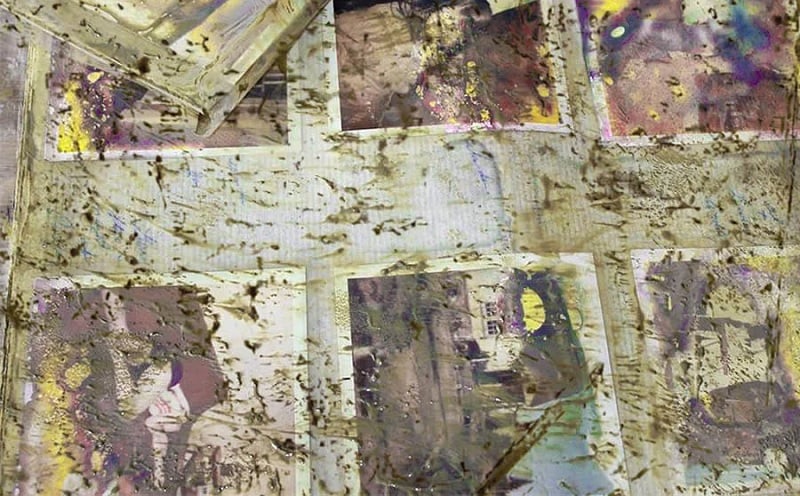
- Air-drying the photo
Lay the photo flat on a clean, dry surface. Next, allow it to air-dry naturally. Avoid exposing the photo to direct sunlight or heat sources, as this may cause further damage.
- Blotting excess water
Use a soft, absorbent material such as blotting paper or a microfiber cloth. Gently remove excess water from the surface of the photo. Press down lightly to absorb moisture without causing damage.
- Flattening the photo
Place the photo between two clean, dry towels if it has become warped or curled due to water damage. Then, stack heavy books or objects on top to flatten it. Leave it in this position until it regains its original shape.
- Retouching damaged areas
Manually retouch areas of the photo that have been damaged or discolored using a digital pen or brush tool. Match the surrounding colors and textures to blend the repaired areas with the rest of the image.
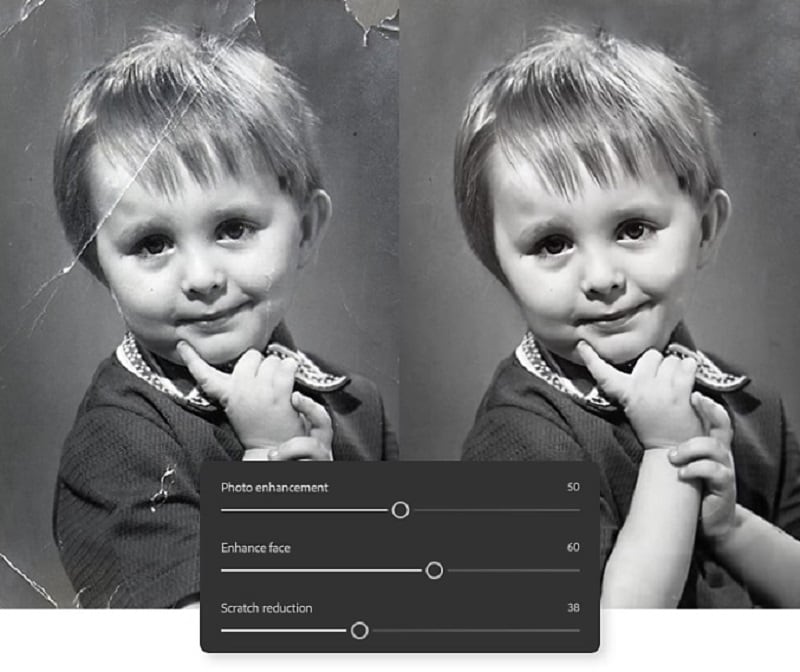
- Cropping and resizing
Consider cropping the photo to remove heavily damaged or unsalvageable areas. Resizing the image can also help improve its overall appearance and resolution.
- Removing stains and blemishes
Use cloning and healing tools to remove stains, spots, and blemishes from the photo’s surface. Clone adjacent areas carefully to fill in missing details and restore the photo to its original condition.
- Using AI-powered old photo restoration tools
Take advantage of AI-powered photo restoration tools. Use tools like Remini or Wondershare Repairit to automate and speed up restoration. These tools provide picture restoration from water damage with impressive accuracy.
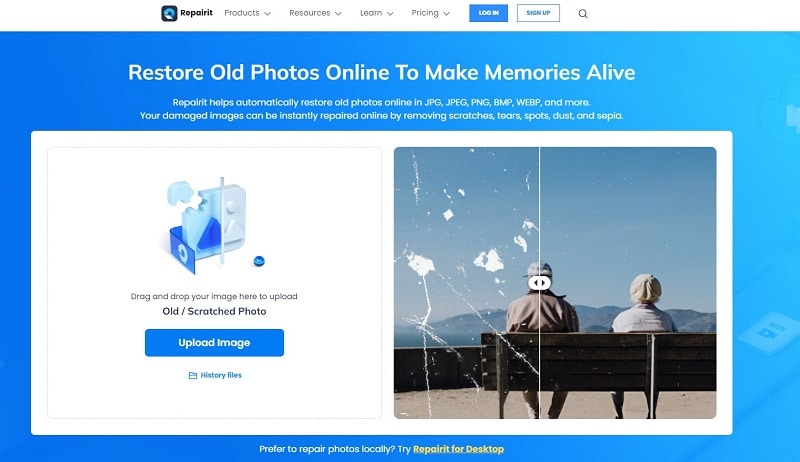
By combining these ten restoration solutions, you can repair water-damaged photos. If all else fails, seeking professional help can be your last resort. Professional photo restorers have access to tools and resources for comprehensive restoration.
Part III. Common Concerns When Restoring Water-Damaged Photos
Water-damaged photo restoration can be a delicate process. It often needs specialized knowledge and techniques. However, common concerns may arise when embarking on your restoration journey. The section addresses these concerns to give you the best possible outcomes for your water-damaged photos.
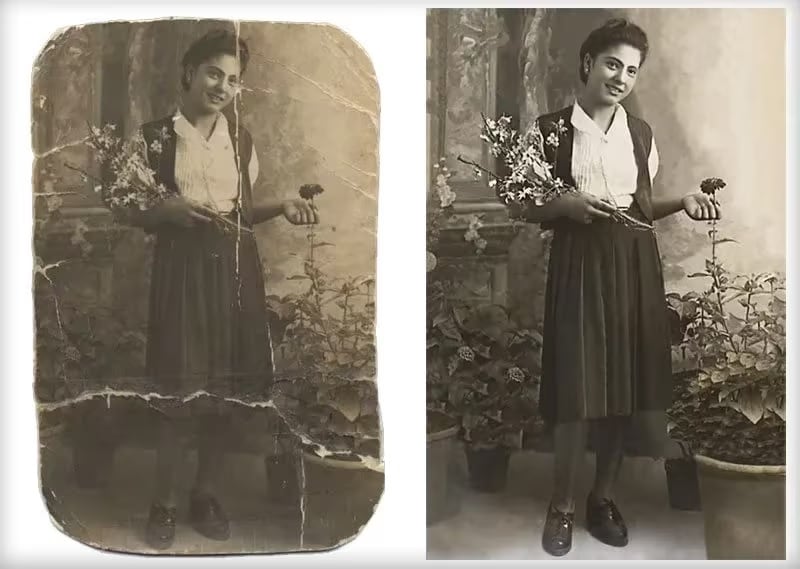
How Long Does It Take To Restore a Water-Damaged Photo?
Restoring water-damaged photos needs patience and care. The time frame varies based on the extent of damage and the restoration method used. Some can be restored in a few hours with professional expertise. Others may take days or even weeks for complex cases. If you have a proven AI-powered tool, then it can take seconds.
Can All Water-Damaged Photos Be Restored?
Not all water-damaged photos can be fully restored. The severity of the damage can impact the restoration potential. These can be due to water saturation, mold growth, or physical tearing. While minor damage can often be corrected, severe damage may be irreparable.
What Should I Do if My Water-Damaged Photos Are Stuck Together?
If your water-damaged photos are stuck together, refrain from attempting to force them apart. Doing so can cause further damage. Instead, separate any loose edges and seek help from a professional restorer. They have the expertise and tools to separate and restore stuck photos safely.
Are There Any Risks Involved in Attempting DIY Photo Restoration?
Attempting DIY photo restoration carries risks. It’s not recommended for those without experience or proper equipment. Some common mishaps include unintended color changes and loss of detail. It can also lead to irreversible damage that alters the photo’s appearance. It’s advisable to weigh the risks against the benefits. Moreover, consider seeking professional help for valuable or sentimental photos.
What Should I Do if I Don’t Have Access To Digital Restoration Software?
If you lack access to digital restoration software, don’t despair. Professional photo restorers offer alternative methods, such as chemical treatments and manual retouching. Some restorers still use traditional restoration techniques. These experts can restore damaged photos without relying on digital tools. They can preserve the integrity and visual appeal of your photos.
Conclusion
Water-damaged photo restoration is crucial for preserving cherished memories and historical artifacts. By getting professional help or DIY methods, you can safeguard your photos for future generations. Many techniques exist to repair water-damaged photos effectively.
Remember, seeking professional assistance ensures the best results. So, whether it’s repairing minor water stains or severe damage, don’t hesitate to explore restoration methods. Let’s ensure our memories remain vivid and intact for years ahead.




